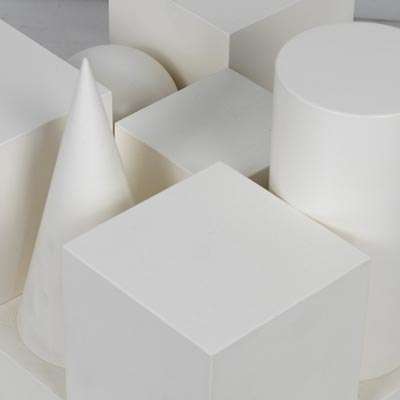
WORLDS OF VLADIMIR NEMUKHIN
NEMUKHIN Vladimir Nikolaevich (1925–2016) Dedicated to Paul Cézanne. 2000–2007. Wood. 28 × 28 × 20
Before us is the sculpture “Dedication to Paul Cézanne”, created by the nonconformist artist Vladimir Nemukhin. Why Cézanne? This is a beautiful story. Cézanne is one of the main innovators of the 20th century, the main figure of post-impressionism. And so distinctive that there is even the term “Cezannism”. In particular, our famous “Jack of Diamonds” (part of the Russian avant-garde) — Konchalovsky, Mashkov, Falk — all of them were at a certain stage Cezannists.
During life, as often happens, Cézanne's paintings sold poorly for a long time. His father immediately considered the choice of his son reckless. Cézanne's father was a banker and wanted the young Paul to lean not on painting, but on bookkeeping. But there was no chance. With the destination, everything was obvious. Cézanne worked hard all his life, a lot and often selflessly. Which killed him. Once he continued to draw a sketch during a severe thunderstorm, unable to stop. As a result, he caught a cold and died. Today, Cézanne is a phenomenally expensive and sought-after artist. His auction record is 60 million dollars. And there is no doubt that this line will not last long.
Why is there a cube, a pyramid, a ball on the sculpture? Cézanne is considered the forerunner, and sometimes the ancestor of cubism. It is no accident that the first stage of cubism, before 1905, that is, before the breakthrough of Picasso and Georges Braque, is called Cezanne. Cézanne was one of the first to decompose the image into primitives in a special way and collect a figurative composition from them. In particular, his painting “Mont Sainte-Victoire” of 1904–1906 simply froze in half a step from analytical cubism. Cézanne repeated more than once that “in nature, everything is molded on the basis of a ball, cone and cylinder”. And there is such a belief (maybe the truth, or maybe an art history legend) that in one of the letters to the young Picasso, Cézanne advised the artist to consider nature as a collection of spheres, cones and cylinders. Most likely Cézanne spoke of compositional construction. But Picasso, they say, understood everything literally and after a couple of years the very cubism appeared, where the image was assembled from cubes and pyramids. That is, the cubism from which Russian cubofuturism, the vanguard and suprematism of Malevich ultimately grew. So the dedication to Cézanne from Nemukhin can essentially be regarded as a sign of respect for the first Russian avant-garde from the main artist of the second Russian avant-garde.
- Log in to post comments










